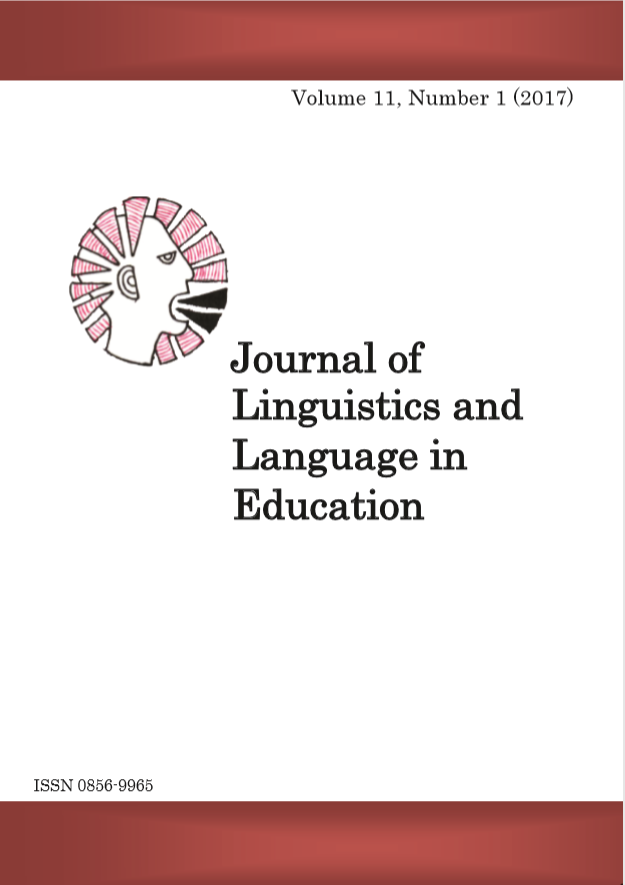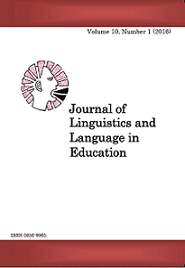Semantics, Morphology and Gender-Marking in Datooga Personal Names
Abstract
This paper describes the Datooga personal names in terms of their
semantics and morphology as well as how gender is marked in
those names. Based on a sample of 490 personal names,the paper
re-affirms that Datooga personal names are meaningful as they
reflect various events and activities in the society. The
meaningfulness of personal names is attributed to the fact that
they are derived from the said events and activities. The major
morphological processes involved in the derivation of the personal
names are affixation, conversion, verbal negation, borrowing and
compounding. In marking the gender of personal names, an array
of linguistic and extra-linguistic factors is involved for gender
differentiation in the Datooga naming system. Further, the
meaning of certain lexical items is central in determining how
gender is marked in personal names. Female names derive from
lexical items with the themes beauty, docility and small size while
male names are associated with the themes bad looking, big size
and dangerous/destructive events/activities. The semantics of the
names are best captured through an encyclopaedic view of
meaning since their meanings are interwoven with the general
culture of the Datooga community.
Key words: Datooga, gender, gender
References
Alderman, D. (2008). Naming and the Interpretation of Cultural
Landscapes. In B. Graham & P. Howard. (eds.). The AshGate
Research Companion to Heritage and Identity , 195-213.
Asheli, N. (2017). The Semantics of Personal Names among the
Kuria, Iraqw and Maasai. Unpublished PhD Thesis,
University of Dar es Salaam.
Blystad, A. (2000). Precarious Procreation: Datooga Pastoralists at
the Late 20th Century. Unpublished PhD Thesis, University
of Bergen.
Blystad, A. (2004). On HIV, Sex and Respect: Local-global Discourse
Encounters among the Datoga of Tanzania. African
Sociological Review, 8(1): 47-66.
Bowern, C. (2008). Linguistic Fieldwork: A Practical Guide. Rice
University: Palgrave.
Chet, C. & Creider, J. (1989). A Grammar of Nandi. Hamburg:
Buske.
Charwi, Z. (2019). A Semantic Analysis of Personal Names in
Datooga Society. Ethnologia Actualis, 19(1): 99-105.
Dimmendaal, G. (2001). Number-Marking and Noun-Categorization
in Nilo Saharan Languages. Anthropological linguistics, 42:
-26.
Duranti, A. (1997). Linguistic Anthropology . Cambridge: Cambridge
University Press.
Eberhard, D. M., Gary F. S. & Charles D. F. (eds.). (2020).
Ethnologue: Languages of the World (23rd Edition). Dallas,
Texas: SIL International.
Farb, P. (1993). Word Play. What Happens when People Talk. New
York: Vintage Book.
| Semantics, Morphology and Dender Marking in Datooga Personal Names
Klima, G. (1964). Jural Relations Between the Sexes among the
Barabaig. Journal of theInternational African Institute ,
(1): 9-20.
Klima, G. (1970). The Barabaig East Africa Cattle Herders . New
York: Waveland Press Inc.
Langacker, R. (2008). Cognitive Grammar: A Basic Introduction.
Oxford: Oxford University Press.
Languages of Tanzania Project. (2009). Atlasi ya Lugha za Tanzania.
Dar es Salaam: Languages of Tanzania Project, University of
Dar es Salaam.
Mietzner, A. (2015) Place Names and Place Naming Strategies in the
Kalenjin (S. Nilotic) Cultural Landscape with Specific Focus
on Cheranga ' ny. In O. Hieda (ed.). Information Structure
and Nilotic Languages (Studies in Nilotic Linguistics).
Tokyo: Research Institute for Languages and Culture of Asia
and Africa, 209-233.
Mietzner, A. (2016). Cheranga ' ny: A Kalenjin Language of Kenya.
Koln: Rudiger.
Mitchell, A. (2015). Linguistic Avoidance and Social Relations in
Datooga. Unpublished PhD Dissertation. State University of
New York.
Mhajida, S. (2019). The Collapse of a Pastoral Economy: The Datoga
of Central and Northern Tanzania from 1830s to 2000s .
Gothenburg: Gothenburg University Press.
Rottland, F. (1982). Southern Nilotic (with an outline of Datooga). In
L. M. Bender (ed.). Nilo-Saharan Language Studies. East
Lansing: African Studies Center, Michigan State University:
-238.
Ruane, J. & Cerulo, K. (2000). Seeing Conventional Wisdom Through
the Sociological Eye . Thousand Oaks, CA: Pine Forge.
Storch, A. (2005). The Noun Morphology of Western Nilotic . Cologne:
Koppe.
Tucker, A. & Bryan, M. (1965). Noun Classification in Kalenjin:
Nandi. African Language Studies, 5: 195-247.
Vaux, B. & Cooper, J. (1999). Introduction to Linguistic Field
Methods. Muenchen: Lincom Europa
Downloads
Published
Issue
Section
License
Copyright © by Department of Foreign Languages and Linguistics, University of Dar es Salaam
All rights reserved. No part of this publication may be reproduced or transmitted in any form or by any means, electronic or mechanical, including photocopying, recording, or any information storage or retrieval system, without permission in writing from the publisher, except for short extracts in fair dealing, for research or private study, critical scholarly review or discourse with an acknowledgement.



